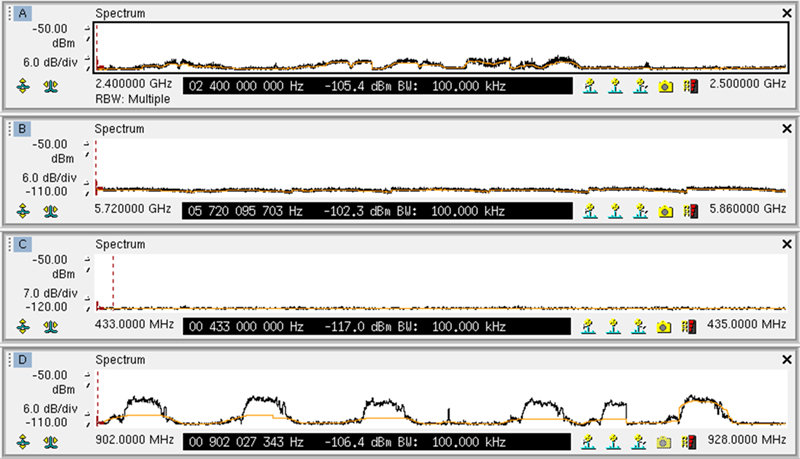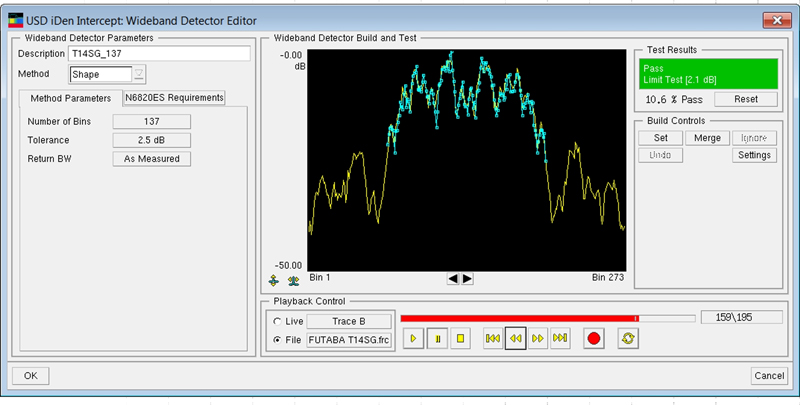
Raymond Shen, PhD
Solutions Manager, Keysight Technologies
Drones in the RF spectrum
Drone remote controllers can operate in one of three frequency ranges reserved for remote control devices (400 MHz, 2.4 GHz and 5.8 GHz bands). These bands can be very crowded – especially the 2.4 GHz ISM where most commercial Wi-Fi and IoT systems operate. An effective Drone Detection System monitors all three bands, while skipping over the vast spectrum in between. Each band is configured with different Resolution Bandwidths (RBW) and trace averaging schemes based on the typical bandwidths and features of the drone control signals.

Isolating drone signals
To isolate drone signals from other signals in the band, the Keysight drone detection software uses a method for automatically detecting energy relative to the noise floor across all three bands. By properly setting the parameters of this noise riding threshold, the system can block out active Wi-Fi channels while still properly responding to and isolating drone control signals from other transmitters legally authorized to operate. The vertical green lines show detections of frequencies with the drone RC. The red line represents the noise riding threshold which is “riding” on top of the Wi-Fi signals but detecting the control signals.

Differentiating one drone control type from another
The next challenge is to discriminate one type of drone control signal from another. There are many other signals that may resemble the drone RF of interest, and differentiating one controller from another is also needed. Spectral shape correlation can achieve this, by defining the shape of each drone controller, similar to an RF fingerprint. Each make of radio controller employs a slightly different scheme to communicate with the drone. The Keysight N6820ES Universal Signal Detector (USD) feature enables the user to apply signal discriminators designed to recognize various drone controllers with minimal false positive results. Besides shape, the USD detector applies three other parameters to differentiate signals: frequency, bandwidth and modulation.

Locating the drone controller
Locating drone controller signals in the ISM band can be a challenge due to WiFi, Bluetooth and IoT signals. The drone controller signals are short duration, frequency hopping (over most of the band) and relatively low power. Affordable network-enabled sensors such as the Keysight N6841A can be distributed around an area and used to both detect and locate these signals. A distributed detection system is beneficial in expanding the coverage area.
For successful geolocation, the signals must be isolated both in frequency and time. When an RC signal is detected, the system must then triangulate the signal using data from the sensors.

For more information, you may write to [email protected], Keysight Technologies Asia Pacific representative.










